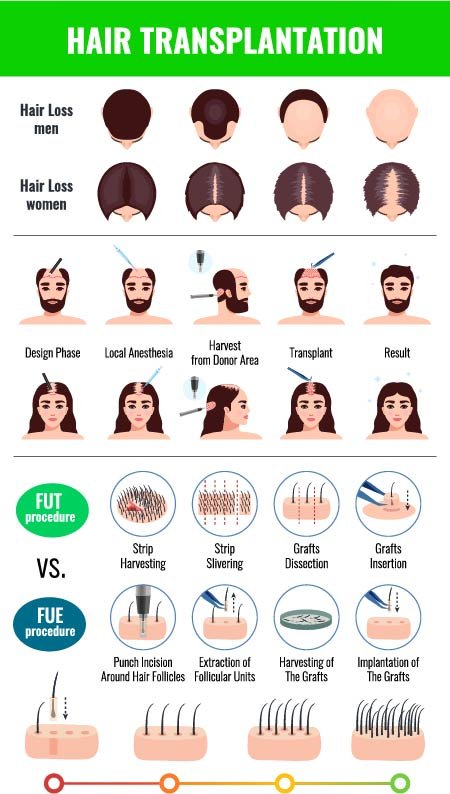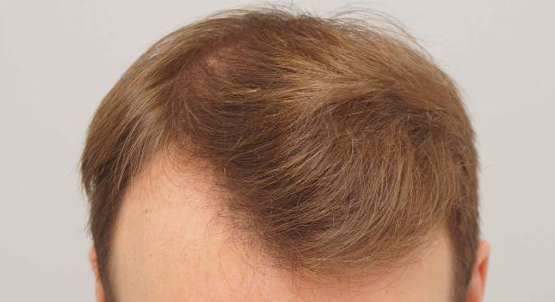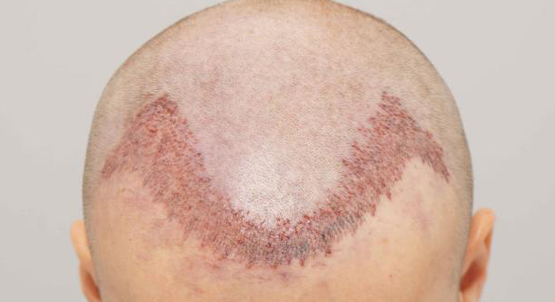HAIR TRANSPLANT

Aging, hormonal changes, and genetics can all contribute to hair loss. Also, hair loss can cause burns, trauma, or illness. While hair loss often blamed on poor scalp circulation, specific vitamin deficiencies, dandruff, and even wearing a hat frequently, none of these assumptions are accurate.
Both men and women can suffer from hair loss resulting in a lack of confidence. Hair replacement surgery can enhance your appearance and your self-confidence. During your initial consultation with Dr. Dhingra, you will be able to determine if a hair transplant in the Chandigarh procedure is right for you.
PROCEDURE
Hair replacement surgery is usually performed under a local anesthetic in an outpatient surgery center. Most patients do not need to stay in the hospital following a hair transplant — grafts extracted from donor areas that usually found on the sides and back of the head. Frequently, two or more surgical techniques are used to create optimal results.
Transplant procedures, such as punch grafts, mini-grafts, micro-grafts, slit grafts, and strip grafts, can all be performed by Dr. Dhingra. Also, flaps, tissue expansion, and scalp-reduction procedures may be appropriate for patients who desire a drastic change or have a limited donor area. The best hair transplant procedure for you will be discussed during your initial consultation.

BENEFITS
While the results of a hair transplant may take a few months to surface, this surgical procedure drastically changes the way that patients look and feel. Self-confidence and youthfulness are the two results that most patients experience right away. We are now performing the new Follicular Unit Extracting technique at our facility.
FOLLICULAR UNIT EXTRACTION
Follicular Unit Extraction (FUE) is a new method of extracting, or “harvesting,” donor hair for transplantation in a follicular unit hair transplant.
In an FUE procedure, an instrument used to make a small, round incision in the skin around a follicular unit, separating it from the surrounding tissue. The group is then extracted (pulled) directly from the scalp, leaving a small open hole, which hardly visible.
This process performed until the hair transplant surgeon has harvested enough follicular units for hair restoration. This process can take one or more hours and, in long sessions, may be accomplished over two consecutive days.
The donor wounds, approximately 1-mm in size, completely heal over seven to ten days, leaving tiny white scars buried in the hair in the back and sides of the scalp.
After the grafts harvested, tiny “recipient sites” are made in the balding area of the scalp using a beautiful needle-point instrument.
The follicular units then placed into the recipient sites where they will grow into healthy hair-producing follicles.
The creation of recipient sites and the placing of follicular unit grafts are mostly the same in both FUE and FUT procedures. The difference lies in the quality and quantity of grafts obtained with each technique.


BODY HAIR TRANSPLANT
Beard, chest, back, legs, and various other portions of the body may be used to harvest grafts for giving a fill gap technique to achieve higher density in multiple parts of the scalp.
Similarly, patients having less hair on the face may benefit from a beard hair transplant where the graft may harvest from the scalp, etc.
Eyebrows and female hair transplants are also available with us.

